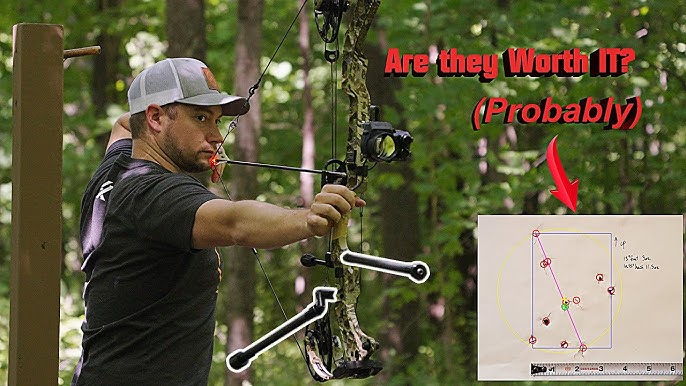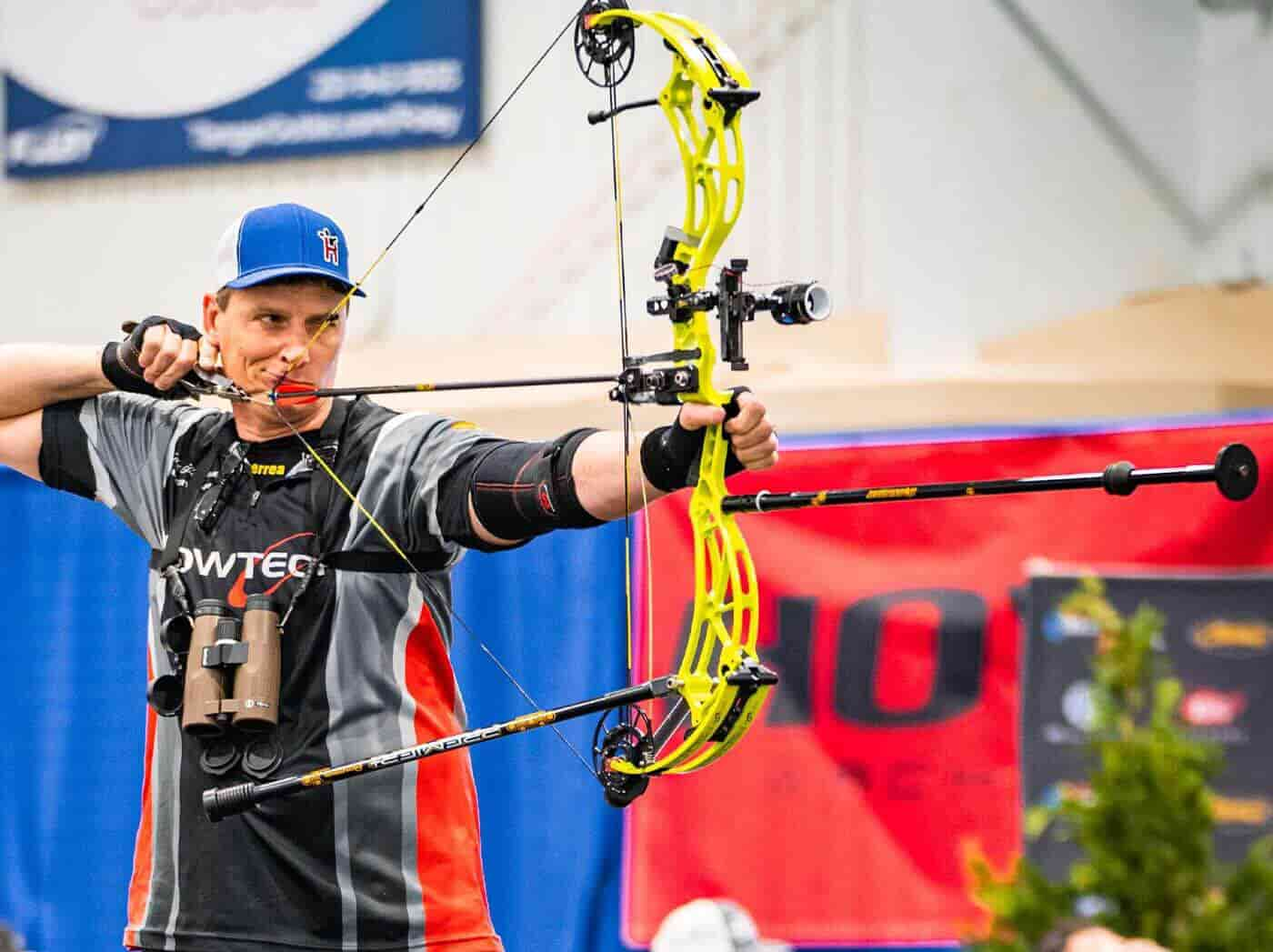Optimize Your Archery Performance With the Perfect Stabilizer: a Detailed Customer's Guide
In this thorough purchaser's guide, we will certainly check out the various types of stabilizers, vital variables to consider, the relevance of appropriate size and weight, picking the appropriate damping system, and upkeep tips. Whether you're an experienced archer or just beginning out, this guide will help you browse the globe of stabilizers and maximize your archery efficiency.
Kinds Of Stabilizers
There are 3 primary kinds of stabilizers typically made use of in archery performance. These stabilizers play an essential function in boosting accuracy and reducing bow torque. The first type is the lengthy pole stabilizer. Long pole stabilizers are normally connected to the front of the bow and prolong in an outward direction. They offer equilibrium and stability during the shot, reducing any kind of unnecessary motion. Long pole stabilizers are especially reliable in reducing bow torque, enabling a much more regular and stable release.
The 2nd kind of stabilizer is the side rod stabilizer. Side rod stabilizers are connected to the side of the bow and help counterbalance any type of lateral motions. They help in keeping a stable and straight goal, specifically when dealing with crosswinds or unequal surface. Side pole stabilizers are especially useful for archers that shoot from a standing setting and require security on both the horizontal and upright axes.
The 3rd type of stabilizer is the V-bar stabilizer. V-bar stabilizers are typically made use of in conjunction with side pole stabilizers to further boost security.
When selecting the best tools to maximize archery performance,Understanding the different types of stabilizers is crucial. Each stabilizer type serves a details objective, and selecting the ideal combination can substantially enhance accuracy and uniformity on the range or in the field.
Trick Elements to Think About

Most importantly, it is vital to think about the size and weight of the stabilizer. Longer stabilizers offer boosted security and balance, while shorter ones provide even more maneuverability. The weight of the stabilizer impacts the total equilibrium of the bow, and it is important to find a stabilizer that matches the weight of your bow.
An additional important variable to consider is the material of the stabilizer. Stabilizers are generally made from light weight aluminum, carbon, or a combination of both. Light weight aluminum stabilizers are resilient and provide excellent vibration dampening, while carbon stabilizers are light-weight and offer superior vibration absorption.
In addition, it is necessary to examine the style and adjustability of the stabilizer. Some stabilizers include adjustable weights and dampeners, allowing you to customize the equilibrium and resonance control. In addition, taking into consideration the placing choices and compatibility with your bow is important to make certain a correct and secure fit.
Last but not least, spending plan is a substantial aspect to take into consideration. Stabilizers can be found in a variety of prices, and it is important to locate one that fits within your spending plan while still meeting your efficiency demands.
Value of Proper Length and Weight

Proper size and weight are essential factors that considerably impact the efficiency of an archery stabilizer. The size of the stabilizer establishes its effectiveness in minimizing click to read bow torque and resonances. archery stabilizer. Longer stabilizers give greater security and equilibrium, causing boosted precision and consistency in arrow trip. On the various other hand, shorter stabilizers are extra manoeuvrable and supply better control throughout rapid target procurement. It is necessary to think about the shooting design, target distance, and individual preference when selecting the length of a stabilizer.
Similarly, the weight of the stabilizer plays an important function in achieving ideal performance. A larger stabilizer absorbs more vibration and lowers bow movement throughout the shot, leading to a steadier objective and tighter groups. A stabilizer that is also hefty can cause exhaustion and impact the shooter's capability to hold stable. It is essential to strike a balance between weight and ability to move to assist in comfortable shooting and preserve uniformity.
Moreover, the length and weight of the stabilizer must work with the archer's physical stamina and capturing method. By picking the ideal size and weight, archers can optimize their stability, minimize bow torque, enhance accuracy, and boost general efficiency. It is recommended to seek advice from seasoned archers or experts to guarantee the ideal match in between the stabilizer and private shooting demands.
Picking the Right Damping System
The option of a suitable damping system is vital in enhancing the efficiency of an archery stabilizer. A damping system is made to minimize the resonances and sound generated when an arrow is released, supplying the archer with a more accurate and steady shot. There are numerous aspects to consider when selecting the ideal damping system for your stabilizer.
To start with, it is crucial to think about the kind of material used in the damping system. Rubber and rubber-like products are commonly utilized due to their capability to absorb vibration effectively. These products are lightweight and also durable, making them excellent for archery stabilizers.
Secondly, the design of the damping system ought to be thought about (archery stabilizer). Try to find a system that provides several get in touch with factors with the stabilizer, as this will disperse the resonances more equally and better boost the stabilizer's performance
Additionally, think about the adjustability of the damping system. Having the ability to fine-tune the degree of damping can be beneficial, as different archers might have differing choices and shooting designs.
Finally, it is necessary to make sure that the chosen damping system works with your stabilizer. Check the measurements and requirements to make sure a correct fit.
Maintenance and Treatment Tips
To make certain ideal efficiency and long life of your archery stabilizer, it is vital to carry out appropriate upkeep and treatment methods. Routine maintenance not just protects against wear and tear but likewise aids determine any kind of prospective issues prior to they become significant problems. Among the primary steps in preserving your stabilizer is to cleanse it routinely. Use a soft towel other or brush to eliminate dust, dirt, and debris from the stabilizer and its parts. Pay special focus to the weight system, as dust can collect in the strings and affect its functionality. In addition, inspect all the components of the stabilizer for any indicators of damage or wear, such as splits or loose screws. If any kind of problems are discovered, it is essential to address them without delay to stop further damages. Lubing the moving parts of the stabilizer, such as the dampers and weight system, is additionally vital to ensure smooth operation. Utilize a top quality lubricating substance suggested by the maker and follow the instructions offered. Last but not least, shop your stabilizer in a cool, completely dry area far from straight sunshine and severe temperature levels to stop bending or various other damages. By following these upkeep and treatment pointers, you can make best use of the efficiency and long life of your archery stabilizer.
Final Thought
Finally, selecting the appropriate stabilizer for archery is critical for taking full advantage of performance. By thinking about elements such as stabilizer type, length, weight, and damping system, archers can improve their accuracy and stability. In addition, correct maintenance and care of the stabilizer is necessary for its durability and optimal functioning. With the appropriate stabilizer and appropriate attention to these variables, archers can enhance their overall archery experience.
The second type of stabilizer is the side rod stabilizer.The 3rd type of stabilizer is the V-bar stabilizer. V-bar stabilizers are commonly utilized in combination with side rod stabilizers to better improve security. The weight of the stabilizer affects the general equilibrium of the bow, and it is essential you could try this out to locate a stabilizer that complements the weight of your bow.
Aluminum stabilizers are durable and supply outstanding resonance wetting, while carbon stabilizers are lightweight and offer premium vibration absorption.
Comments on “Mastering Archery Stabilizers: A Full Guide for Beginners”